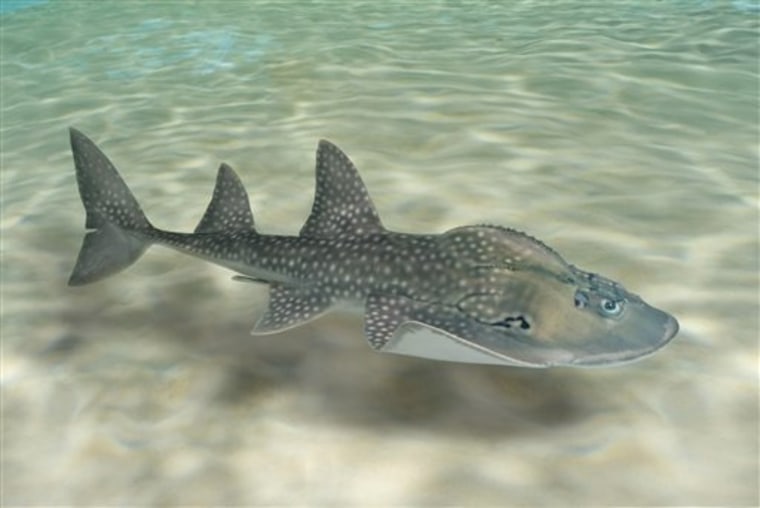Cupid's making a stop at the "Swimming with Sharks" exhibit at the Newport Aquarium just in time for Valentine's Day. The aquarium has acquired a rare male shark ray to serve as a companion to female Sweet Pea, with the hope that the two will hit it off and produce some offspring for the nearly endangered fish.
The male — who will be named either Sam, Gil or Scooter depending on the results of a "Name the Shark" contest — is currently spending time in an acclimation tank. Aquarium officials said he'll be ready to make his debut alongside Sweet Pea on Valentine's Day.
"We're hoping for a love connection right here in the tank," said Jill Isaacs, aquarium spokeswoman.
So are aquatic experts worried about the prehistoric-looking fish's survival. Shark rays are on the World Conservation Union's Red List of Threatened Species. Threatened means the species population is critically low and in danger of falling on the endangered species list.
Newport is one of only two aquariums in the country to exhibit shark rays and aquarium aquatics curator Mark Dvornak said nobody's sure just how they'll get along.
"We don't know much, so we'll observe and document," Dvornak said. "With some sharks, you have to physically change the environment before they'll breed. We don't know if that's true with the shark ray or not."
The aquarium will let the two spend time getting to know each other, a process that Dvornak said could take up to two years. Part of the mystery is just how the rays _ which have hornlike ridges on their neck and back, a dorsal fin and rounded underside _ mate.
Experts think the sharks copulate with the female carrying any offspring inside, unlike most female fish who release eggs into the water that males can fertilize by swimming past.
The program is designed to last at least 12 years, giving aquarium officials plenty of time to study the mysterious creature's habits.
"Captive breeding is important, certainly for the long-term viability of zoos and aquariums, but also for conservation projects and the future of a given species," said Thane Maynard, interim director of the Cincinnati Zoo and Botanical Garden. "Equally important is the learning curve we see by observing animals rarely exhibited in public, especially so many fish species."
